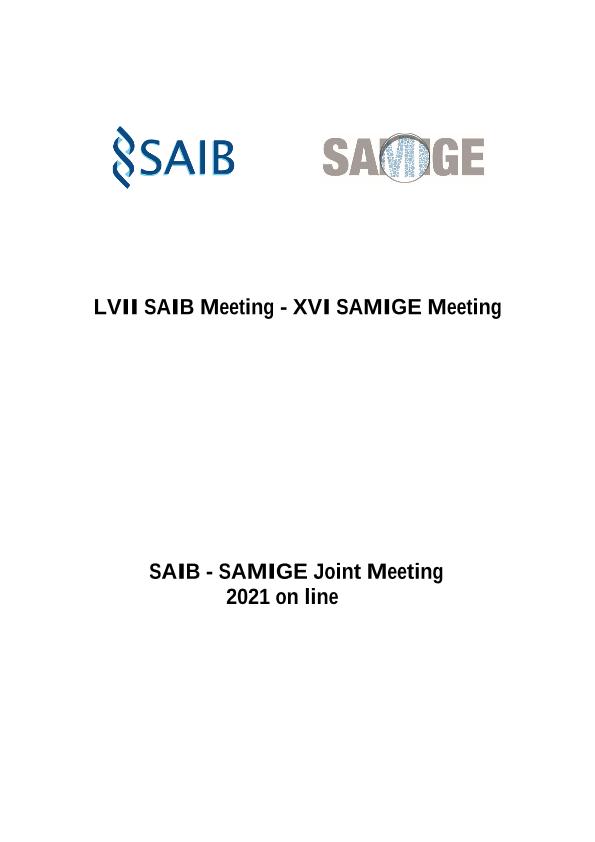Mostrar el registro sencillo del ítem
dc.contributor.author
Arana, N. A.
dc.contributor.author
Müller, G. L.
dc.contributor.author
Mussi, María Alejandra

dc.date.available
2023-07-18T17:35:07Z
dc.date.issued
2021
dc.identifier.citation
Deciphering the light signal transduction mechanism in Staphylococcus aureus; LVII SAIB Meeting; XVI SAMIGE Meeting; Argentina; 2021; 122-122
dc.identifier.issn
0327-9545
dc.identifier.uri
http://hdl.handle.net/11336/204327
dc.description.abstract
Staphylococcus aureus, Pseudomonas aeruginosa, and Acinetobacter baumannii have been recognized by the WHO and the CDC as critical human pathogens. These microorganisms belong to the ESKAPE group, so named since they are capable of "escaping" antibiotic treatments. The infections caused by these pathogens result in a dramatic increase in the costs of medical care. Previous results from our laboratory have shown that these microorganisms can sense and respond to light. In S. aureus, light has been shown to modulate important pathogenicity determinants such as alpha toxin-dependent hemolysis, as well as virulence in an epithelial infection model, which could have implications in human infections. Light also regulates persistence, metabolism, and the ability to kill competitors such as C. albicans, in this microorganism. To our knowledge, the ability of S. aureus to sense and respond to light constitutes a newly described physiological trait. These pathogens could sense light to synchronize their behavior with the circadian rhythm of their hosts, likely as a strategy to optimize infection development. Identification of the photoreceptors involved in light sensing in S. aureus would provide important insights into the light signal transduction cascade. Despite no traditional photoreceptors were found encoded in its genome, we identified the presence of three putative proteins containing GAF domains. GAF domains have been shown to be part of phytochromes and cyanobacteriochromes along with other domains such as PHY and PAS. While in two of them the GAF domain encompasses the full-length protein sequence, suggesting a new photoreceptor architecture, the last one harbors a GAF N-terminal domain associated with a C-terminal histidine kinase. The genomic environment of each putative photoreceptor was determined, and genes such as LuxR, involved in a quorum-sensing regulation; and DegU, identified as a response regulator of bacterial motility, virulence and biofilm formation, were found in their close proximity. Recent results from our group show that motility in S. aureus is not only modulated by blue light, but also by red and green lights. This is compatible with multiple GAF photoreceptors as they exist in two thermally stable states interconvertible by light, absorbing in different regions of the spectrum. Moreover, the presence of three cysteine residues were observed, residue shown to be essential for binding of the bilin chromophore. In this sense, it is interesting to note that S. aureus produces Staphylobilin as a product of heme metabolism. In addition, we amplified the DNA fragments encoding these putative photoreceptors from S. aureus USA300 strain, and subcloned them into the expression vector pET-TEV, to corroborate that they are active photoreceptors upon light absorption. Finally, proteomic results are discussed which suggest new pathways modulated by light in S. aureus such as cell wall synthesis and recycling.
dc.format
application/pdf
dc.language.iso
eng
dc.publisher
Tech Science Press

dc.rights
info:eu-repo/semantics/openAccess
dc.rights.uri
https://creativecommons.org/licenses/by-nc-sa/2.5/ar/
dc.subject
LIGHT REGULATION
dc.subject
PHOTORECEPTORS
dc.subject
STAPHYLOCOCCUS AUREUS
dc.subject.classification
Biología Celular, Microbiología

dc.subject.classification
Ciencias Biológicas

dc.subject.classification
CIENCIAS NATURALES Y EXACTAS

dc.title
Deciphering the light signal transduction mechanism in Staphylococcus aureus
dc.type
info:eu-repo/semantics/publishedVersion
dc.type
info:eu-repo/semantics/conferenceObject
dc.type
info:ar-repo/semantics/documento de conferencia
dc.date.updated
2022-12-12T23:13:08Z
dc.journal.pagination
122-122
dc.journal.pais
Estados Unidos

dc.description.fil
Fil: Arana, N. A.. Consejo Nacional de Investigaciones Científicas y Técnicas. Centro Científico Tecnológico Conicet - Rosario. Centro de Estudios Fotosintéticos y Bioquímicos. Universidad Nacional de Rosario. Facultad de Ciencias Bioquímicas y Farmacéuticas. Centro de Estudios Fotosintéticos y Bioquímicos; Argentina
dc.description.fil
Fil: Müller, G. L.. Consejo Nacional de Investigaciones Científicas y Técnicas. Centro Científico Tecnológico Conicet - Rosario. Centro de Estudios Fotosintéticos y Bioquímicos. Universidad Nacional de Rosario. Facultad de Ciencias Bioquímicas y Farmacéuticas. Centro de Estudios Fotosintéticos y Bioquímicos; Argentina
dc.description.fil
Fil: Mussi, María Alejandra. Consejo Nacional de Investigaciones Científicas y Técnicas. Centro Científico Tecnológico Conicet - Rosario. Centro de Estudios Fotosintéticos y Bioquímicos. Universidad Nacional de Rosario. Facultad de Ciencias Bioquímicas y Farmacéuticas. Centro de Estudios Fotosintéticos y Bioquímicos; Argentina
dc.relation.alternativeid
info:eu-repo/semantics/altIdentifier/url/http://www.samige.org.ar/admin/news/files/177-Biocell-Preprint-SAIB-SAMIGE-2021.pdf
dc.conicet.rol
Autor

dc.conicet.rol
Autor

dc.conicet.rol
Autor

dc.coverage
Nacional
dc.type.subtype
Encuentro
dc.description.nombreEvento
LVII SAIB Meeting; XVI SAMIGE Meeting
dc.date.evento
2021-11-03
dc.description.paisEvento
Argentina

dc.type.publicacion
Journal
dc.description.institucionOrganizadora
Sociedad Argentina De Investigación Bioquímica Y Biología Molecular
dc.description.institucionOrganizadora
Sociedad Argentina de Microbiología General
dc.source.revista
Biocell

dc.date.eventoHasta
2021-11-04
dc.type
Encuentro
Archivos asociados
